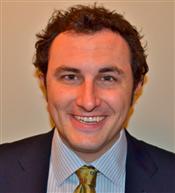Program Information
Accurate Prediction of CT Tube Current Modulation: Estimating Tube Current Modulation Schemes for Voxelized Patient Models Used in Monte Carlo Simulations
K McMillan1*, M Bostani1 , C McCollough2 , M McNitt-Gray1 , (1) UCLA School of Medicine, Los Angeles, CA, (2) Mayo Clinic, Rochester, MN
Presentations
TU-EF-204-1 (Tuesday, July 14, 2015) 1:45 PM - 3:45 PM Room: 204
Purpose: Most patient models used in Monte Carlo-based estimates of CT dose, including computational phantoms, do not have tube current modulation (TCM) data associated with them. While not a problem for fixed tube current simulations, this is a limitation when modeling the effects of TCM. Therefore, the purpose of this work was to develop and validate methods to estimate TCM schemes for any voxelized patient model.
Methods: For 10 patients who received clinically-indicated chest (n=5) and abdomen/pelvis (n=5) scans on a Siemens CT scanner, both CT localizer radiograph (“topogram”) and image data were collected. Methods were devised to estimate the complete x-y-z TCM scheme using patient attenuation data: (a) available in the Siemens CT localizer radiograph/topogram itself (“actual-topo”) and (b) from a simulated topogram (“sim-topo”) derived from a projection of the image data. For comparison, the actual TCM scheme was extracted from the projection data of each patient. For validation, Monte Carlo simulations were performed using each TCM scheme to estimate dose to the lungs (chest scans) and liver (abdomen/pelvis scans). Organ doses from simulations using the actual TCM were compared to those using each of the estimated TCM methods (“actual-topo” and “sim-topo”).
Results: For chest scans, the average differences between doses estimated using actual TCM schemes and estimated TCM schemes (“actual-topo” and “sim-topo”) were 3.70% and 4.98%, respectively. For abdomen/pelvis scans, the average differences were 5.55% and 6.97%, respectively.
Conclusion: Strong agreement between doses estimated using actual and estimated TCM schemes validates the methods for simulating Siemens topograms and converting attenuation data into TCM schemes. This indicates that the methods developed in this work can be used to accurately estimate TCM schemes for any patient model or computational phantom, whether a CT localizer radiograph is available or not.
Funding Support, Disclosures, and Conflict of Interest: Funding Support: NIH Grant R01-EB017095; Disclosures - Michael McNitt-Gray: Institutional Research Agreement, Siemens AG; Research Support, Siemens AG; Consultant, Flaherty Sensabaugh Bonasso PLLC; Consultant, Fulbright and Jaworski; Disclosures - Cynthia McCollough: Research Grant, Siemens Healthcare
Contact Email:


